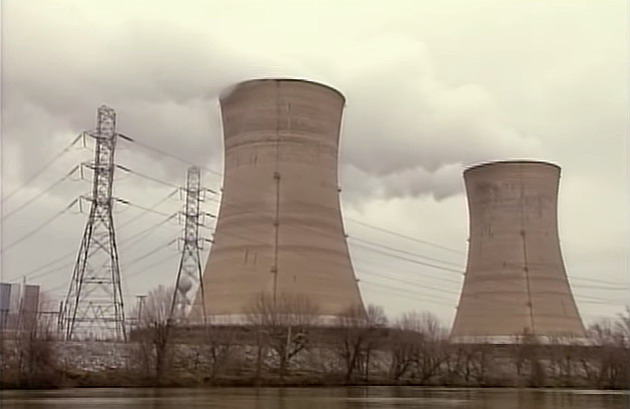Is Nuclear Energy Renewable?

Nuclear energy or atomic energy is the energy of the center of the atom where the nucleus is located and where we can find subatomic particles such as protons and neutrons.
The universe is formed by very tiny particles called atoms, and today we are generating cleaner electricity using the nuclear fission reaction, which unleashes the huge power lying inside the nucleus of the atom.
The Thermonuclear Reaction
Today, humanity can only unleash the power of the atom using the nuclear fission reaction, which generates low carbon electricity and a pretty impressive amount of nuclear waste, which is hazardous for all living beings including the environment.
We are not yet able to generate unlimited amounts of clean electricity using the nuclear fusion reaction (which takes place in the Sun every second) because the technology is not developed today at the level required to safely control the thermonuclear reaction.
The nuclear fusion reaction is cleaner and more efficient than the nuclear fission reaction because more clean energy and much less nuclear waste is generated by the thermonuclear fusion reaction.
The nuclear fusion reaction is cleaner
The nuclear fusion reaction is much better for humanity, but represents a more complex process, which requires a few more decades of technological development.
In the nuclear reactors of today, the nuclear fission reaction is the main process used to generate low carbon electricity, but because uranium (the main nuclear fuel used today) represents a finite resource, we cannot consider nuclear energy as a renewable energy source, but we can consider it a low carbon energy source.
Nuclear energy generated by the nuclear fission reaction can be considered a renewable energy source only if we find a fuel that is suited for this type of nuclear reaction and represents an infinite resource.
However, the nuclear fusion reaction generates more power than the nuclear fission reaction, much less waste and can use hydrogen as fuel.
Hydrogen represents a very abundant element in the known universe, so we can consider the nuclear fusion reaction as a renewable energy source.
Is Nuclear Energy Renewable?
The answer is Yes and No. Why?
The answer to this question is directly related to the type of the nuclear fuel used in the nuclear reaction.
In the today’s nuclear power plants, uranium and plutonium represent the main fuel used in the nuclear fission reaction.
Lately, thorium it turned out to be a good replacement for uranium.
Thorium
Thorium is a radioactive chemical element that can successfully replace uranium in the nuclear reactors because is more abundant in nature, has superior physical and nuclear properties as nuclear fuel, and generates less nuclear waste during the nuclear fission reaction.
Thorium is more abundant in nature (compared to uranium), but is still a finite resource.
By using these finite resources (uranium, plutonium, thorium) as nuclear fuel in the nuclear fission reaction, nuclear energy becomes a nonrenewable energy source.
In this case, the answer to the question if nuclear energy is renewable is No!
If we are talking about the nuclear fusion reaction, we can use hydrogen as nuclear fuel, and because hydrogen is a very abundant element in the universe, we can consider nuclear energy as renewable.
In this case, the answer to the question if nuclear energy is renewable is Yes!
So, again, to answer the question we need to know the nuclear fuel used in the nuclear reaction.
The nuclear fuel used in the nuclear reaction dictates if the energy produced is renewable or finite
If the nuclear fuel used represents a finite resource, nuclear energy becomes non renewable, and if the nuclear fuel used is abundant in the universe (hydrogen) we consider nuclear energy as renewable.
Judging after these statements, we realize that nuclear energy will become a renewable source of energy only when the humanity will master the nuclear fusion reaction.
This could happen by the middle of the century (by 2050).
However, to better understand what nuclear energy represents, we need to see a few facts about the amazing power of the atom.
Facts About Nuclear Energy
Final conclusion
Nuclear energy produced using the nuclear fission reaction will either disappear along with the other forms of energy produced by burning fossil fuels, or it will be replaced by the clean energy produced by the nuclear fusion reaction that is a very good candidate to power mankind’s energy needs in the future.






